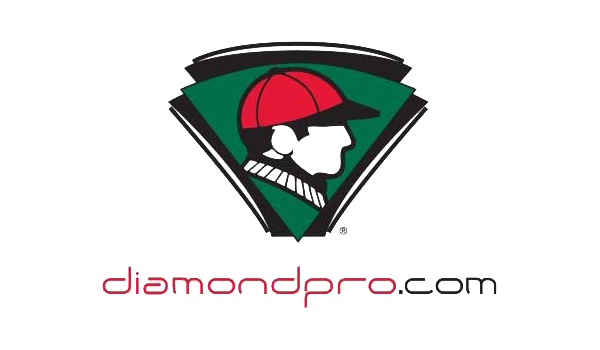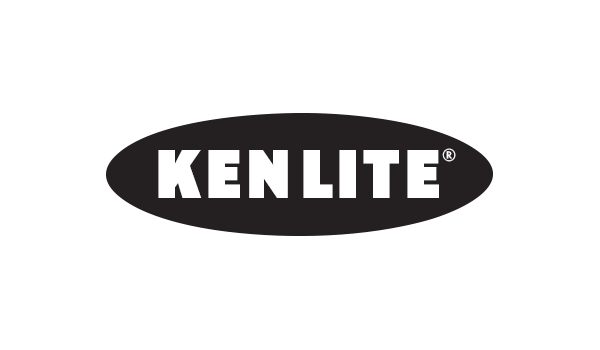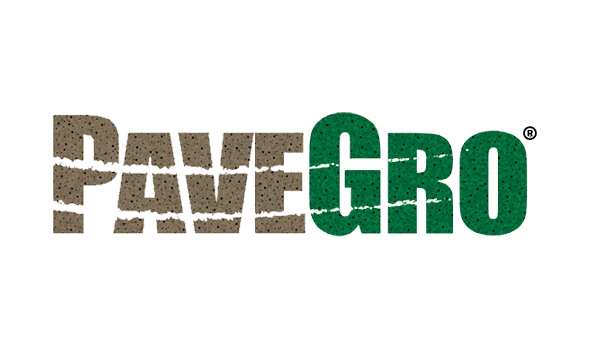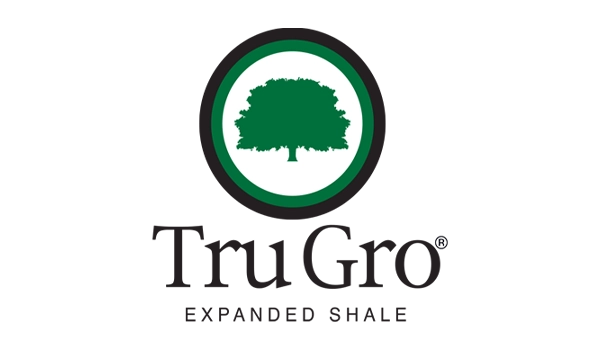Asphalt Surfaces
Arcosa Lightweight’s Streetman Product Has Highest Polish Value in Texas
-
Article Body Text:
A polish value measures the ability of an aggregate to withstand the polishing effects of traffic wear. It is determined through readings on a test specimen of aggregate after nine hours of polishing in an accelerated polishing machine. Simply put, Arcosa’s material maintains its “roughness” and wet weather skid characteristics, ensuring safety even after years of heavy traffic wear.
Maintaining Roadways
With the fiscal condition of most public agencies, maintaining pavements that are in “acceptable or above acceptable” condition is crucial, as the cost of rehabilitation or reconstruction can be significant. On average, it costs approximately 20 cents on the dollar to maintain these conditions using conventional chip seals, making proactive road maintenance an economical choice.
Oscar H. Rodriguez, P.E., Construction Materials Engineer and industry expert, began his career in TxDOT’s Materials and Tests Division and the Austin District Laboratory. He is well-versed in HMAC designs for high-profile locations, including the Texas Motor Speedway in Fort Worth and test tracks statewide for Goodyear, Cooper Tire, and General Tire. He describes the advantages of lightweight aggregate by likening it to a sponge:
“If you cut a sponge in half, you expose its cells inside, each with tiny edges formed by air bubbles,” Rodriguez explains. “As you wear through the shell of lightweight aggregate, you expose one of its best characteristics – its abrasive texture formed by its cells makes it highly resistant to polishing and stripping.”
Rodriguez Engineering Laboratories, LLC is a leader in construction materials engineering, provides extensive testing and evaluation services for Hot Mix Asphalt Concrete (HMAC), asphalt binders, emulsions, cutbacks, Portland Cement Concrete (PCC), soils, aggregates, and performs full geotechnical investigations. With decades of experience and a team of skilled engineers, Rodriguez Engineering Laboratories is committed to providing clients with precise and reliable results.
District-Wide Use
TxDOT Districts initiate district-wide chip seal contracts in the Fall/Winter for construction in the following Summer. This allows aggregate suppliers ample time to produce and deliver the aggregate, and it provides TxDOT with the necessary time to prepare roadways for chip sealing.
In Texas, both lightweight aggregate (TxDOT Item 302-Type L or PL) and crushed stone (TxDOT Item 302-Type B or PB) are held to identical quality standards, tested on an equal scale.
- The Issue: Maintaining Texas roadways in acceptable condition while reducing the high costs of rehabilitation and ensuring long-lasting skid resistance in wet weather.
- What Arcosa Did: Provided lightweight expanded shale aggregate with a high polish value for chip seal applications, ensuring durable, skid-resistant surfaces.
- Why Lightweight Works: The unique cellular structure of lightweight aggregate resists polishing, maintains texture, and withstands traffic wear, enhancing safety and performance.
- Result: Enhanced safety with high skid resistance, durability, and cost-effective roadway maintenance across Texas highways.
- Key Quote: “If you cut a sponge in half, you expose its cells inside, each with tiny edges formed by air bubbles. As you wear through the shell of lightweight aggregate, you expose one of its best characteristics – its abrasive texture formed by its cells makes it highly resistant to polishing and stripping.” — Oscar H. Rodriguez, P.E., Construction Materials Engineer
- Industry Context: Lightweight aggregate’s durability and polish resistance make it superior to conventional aggregates, particularly in wet weather conditions.
- Lessons Learned: Using lightweight aggregate with a high polish value in chip seal applications provides a long-term, cost-effective solution for roadway maintenance.
- Project: Texas Seal Coat and Surface Treatment Applications
- Location: Various districts across Texas
- Customer: Texas Department of Transportation (TxDOT)
- Project Size: 300,000+ cubic yards of lightweight aggregate
Key Insights:
Quick Facts
Final Results
Key Quote
Context:
Explore Further
Additional Case Studies
Chipseal Delivers Economy, Longer Lasting Roads in Nebraska Project
-
Article Body Text:
“They moved to a program of more frequent maintenance. It’s about keeping water out of the asphalt.”
Now a Grading Foreman at Morris Inc. in South Dakota, Radke spent over 23 years as a highway maintenance supervisor with NDOT. Radke, a Professional Engineer, moved from Nebraska to Pierre, South Dakota in 2020 to be closer to his family.
The Process
Chip seals are a technique used to extend the life of asphalt pavements. The process begins with an even application of hot emulsion over existing pavement, followed by an even distribution of well-graded aggregate. For the Highway 61 project, NDOT used an innovative technique involving a heavier application of emulsion, followed by a second round of fogging with emulsion after a 10-day curing period.
“We shot the emulsion at a considerably heavier rate than we normally do with chip seals, and then we applied the fog coating of emulsion,” Radke explains. This method has proven effective, with the project holding up well through the challenging Nebraska winter.
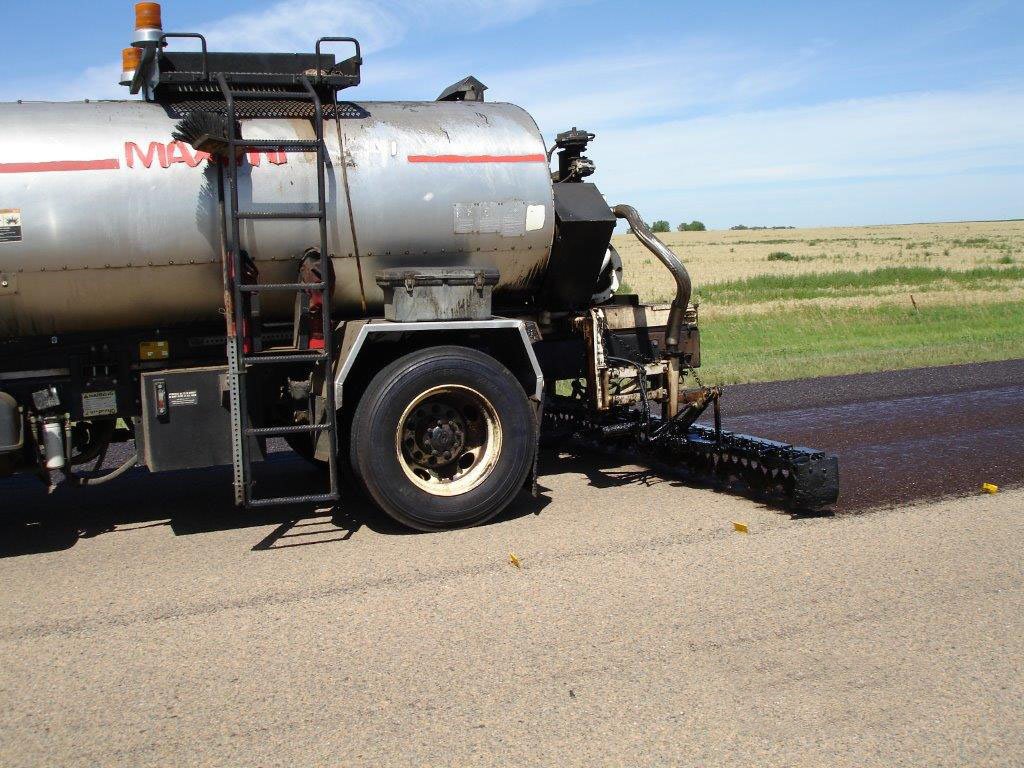
Completed in June 2015, the project has maintained its appearance and performance, with minimal aggregate loss and color change. “It’s held up very well, with very little loss of aggregate and very little change in color.” Because of the success of this project, NDOT later installed another eight miles of road with the same technique.
The initial emulsion, CRS-2P, was applied at a rate of 0.43 gallons per square yard, and the expanded shale was applied at an average of 14 to 15 lbs. per square yard. “We started the application at 18 pounds per square yard and dropped the rate until we had no loose material on top,” Radke explains.
“Compaction was key,” he adds. “We ran three rollers. The roller operators were instructed to never stop rolling, even while waiting for oil. We had them roll the entire length of the surface we had covered. We also didn’t sweep anything until the next day. What had been loose material the day before was now embedded in the oil.” After the chip seal had cured for 10 days, a fog seal of CSS-1H 50 was applied at the rate of 0.14 gallons per square yard.
Angular-Faced Aggregate Means Better Retention
In north and central Nebraska, the supply of locally available coarse aggregate is very limited. The available aggregate is typically river rock, which is spherical and not ideal for use in road sealing projects. Spherical or round-faced aggregates come loose more easily, leading to chipped windshields and reduced pavement life.
The angular faces of lightweight aggregates, by contrast, provide higher retention rates and longer-lasting pavements. “The angular-faced aggregate seems to sit tighter, with better retention,” Radke says. Additionally, lightweight aggregate particles are less likely to chip windshields if they do come loose.
Lightweight Aggregate Means Reduced Shipping Costs
When non-local aggregate must be transported, weight significantly impacts shipping costs. Arcosa’s lightweight aggregate, with half the density of conventional gravel, provides a cost-effective solution. Its lighter weight enables the higher-performance material to be shipped over longer distances without breaking the budget.
- The Issue: Maintaining Texas roadways in acceptable condition while reducing the high costs of rehabilitation and ensuring long-lasting skid resistance in wet weather.
- What Arcosa Did: Provided lightweight expanded shale aggregate with a high polish value for chip seal applications, ensuring durable, skid-resistant surfaces.
- Why Lightweight Works: The unique cellular structure of lightweight aggregate resists polishing, maintains texture, and withstands traffic wear, enhancing safety and performance.
- Result: Enhanced safety with high skid resistance, durability, and cost-effective roadway maintenance across Texas highways.
- Key Quote: “If you cut a sponge in half, you expose its cells inside, each with tiny edges formed by air bubbles. As you wear through the shell of lightweight aggregate, you expose one of its best characteristics – its abrasive texture formed by its cells makes it highly resistant to polishing and stripping.” — Oscar H. Rodriguez, P.E., Construction Materials Engineer
- Industry Context: Lightweight aggregate’s durability and polish resistance make it superior to conventional aggregates, particularly in wet weather conditions.
- Lessons Learned: Using lightweight aggregate with a high polish value in chip seal applications provides a long-term, cost-effective solution for roadway maintenance.
- Project: Texas Seal Coat and Surface Treatment Applications
- Location: Various districts across Texas
- Customer: Texas Department of Transportation (TxDOT)
- Project Size: 300,000+ cubic yards of lightweight aggregate
Key Insights:
Quick Facts
Final Results
Key Quote
Context:
Explore Further
Additional Case Studies
Lightweight Aggregate Used as Ice Chat Improves Safety From Winter Weather
-
Article Body Text:
Grade 5 Modified Ice Chat is a unique winter road safety product that improves traction and helps drivers safely navigate icy patches on roads and bridges. Traditionally, “ice chat” consists of sand and magnesium chloride, a mixture used for both de-icing and increasing traction on slick surfaces. In the Grade 5 Modified blend, lightweight aggregate replaces sand, resulting in a solution that’s equally effective but far more efficient in terms of cost, weight, and clean-up needs.
Innovative Composition for Enhanced Performance
Grade 5 Modified Ice Chat is composed of 60% rock shards, 10% magnesium chloride (a salt-based de-icer), and 30% lightweight aggregate. The lightweight aggregate acts as a superior alternative to sand, providing moisture absorption while adding critical traction for vehicle tires on icy roads. This blend not only keeps roads safer but also provides additional benefits that traditional sand mixtures lack.
Proven Results in Extreme Weather
During the extreme winter weather that hit North Texas in February 2011, Arcosa’s Streetman Expanded Shale Plant supplied over 12,000 cubic yards of Grade 5 Modified Ice Chat to TXDOT districts, city maintenance teams, and private facilities. The material was also used on walkways around Dallas Cowboy Stadium during Super Bowl XLV, providing traction in high-traffic areas. This large-scale deployment demonstrated Ice Chat’s ability to effectively meet demand while delivering reliable results in challenging winter conditions.
Product Benefits: Reducing Maintenance and Liability
With its lightweight aggregate substitution, Grade 5 Modified Ice Chat provides significant advantages in terms of clean-up and maintenance. The material is lightweight and naturally disperses off the roadway with traffic flow, reducing the need for extensive sweeping. This translates into lower maintenance costs and reduced liability, as it eliminates the need for crews to perform potentially hazardous post-application clean-up.
“The material weighs half as much as most competitive products, so once the ice melts, the natural rotation of vehicle tires will sweep excess material off to the shoulder of the road, ensuring a clean roadway without additional cleanup.”
Versatile Applications Beyond De-Icing
The Grade 5 Modified product is not only designed for de-icing but is also highly versatile. This (-3/8) blend of materials can be used for various maintenance tasks, including pothole patching and absorbing chemical spills. Its lightweight composition and moisture-absorbing properties make it a valuable, multi-functional resource for transportation departments and maintenance crews year-round.
- The Issue: Improving road traction in icy conditions while reducing the clean-up needs typically associated with sand-based de-icing materials.weather.
- What Arcosa Did: Provided a Grade 5 Modified Ice Chat blend, substituting sand with lightweight aggregate to improve moisture absorption, reduce weight, and minimize maintenance requirements.
- Why Lightweight Works: The lightweight aggregate provides added traction, reduces cleanup needs, and cuts down on transportation and application costs due to its low density.
- Result: Increased road safety, minimized skidding risk, and reduced maintenance costs across TXDOT districts and high-traffic areas such as Dallas Cowboy Stadium.
- Key Quote: “The material weighs half as much as most competitive products, so once the ice melts, the natural rotation of vehicle tires will sweep excess material off to the shoulder of the road.”
- Industry Context: By replacing sand with lightweight aggregate, Grade 5 Modified Ice Chat offers a cost-effective, high-performing alternative that is easier to apply, maintain, and clean up.
- Lessons Learned: Lightweight aggregate in de-icing materials reduces both labor and liability, proving beneficial for departments managing large road networks.
- Project: Grade 5 Modified Ice Chat
- Location: North Texas







